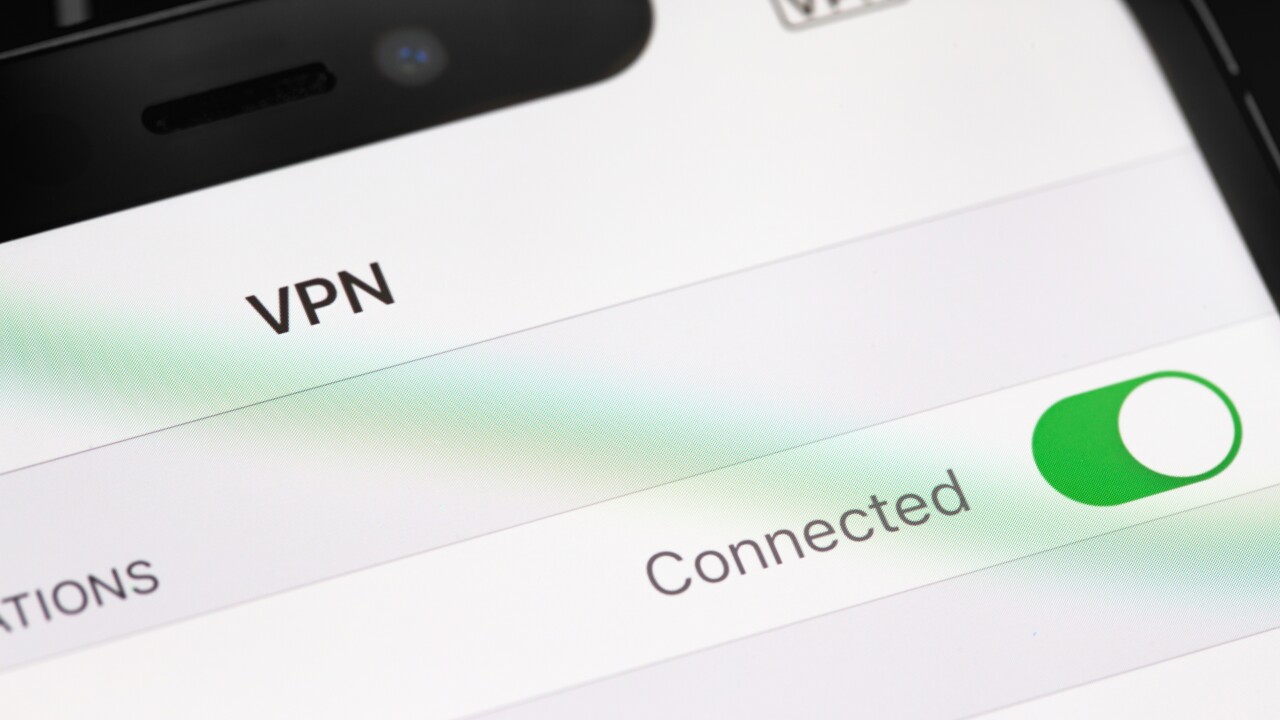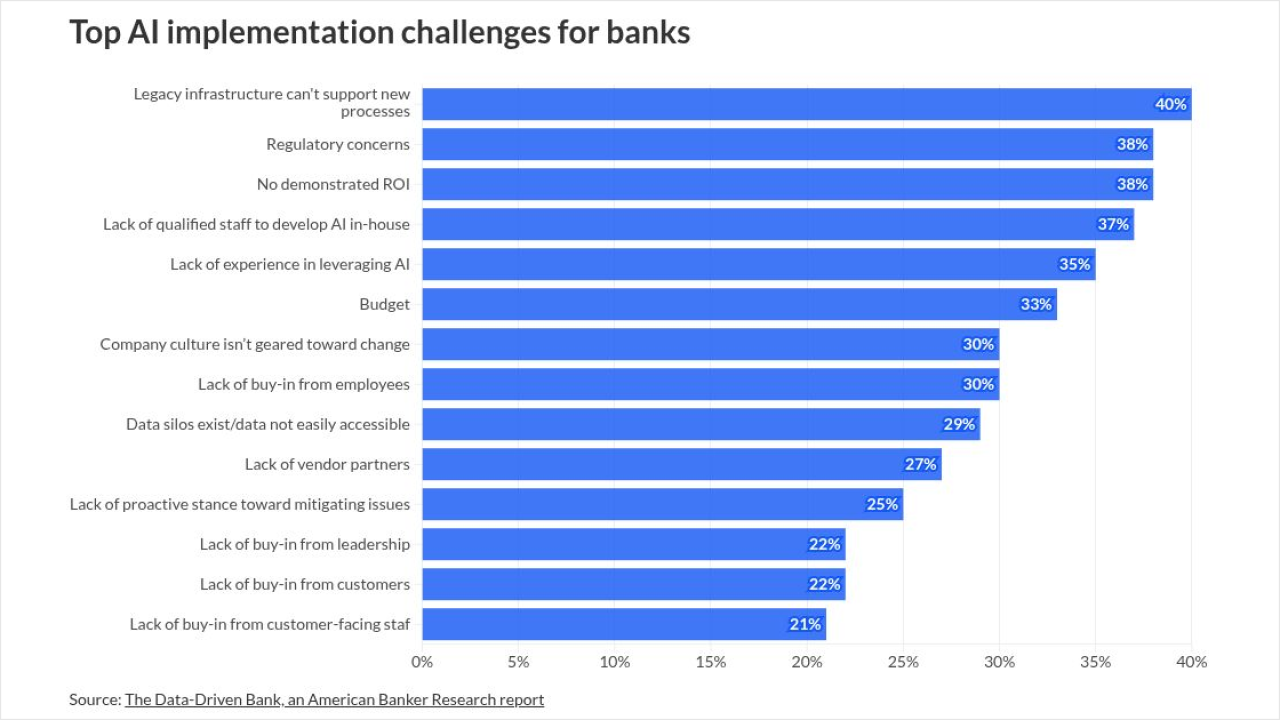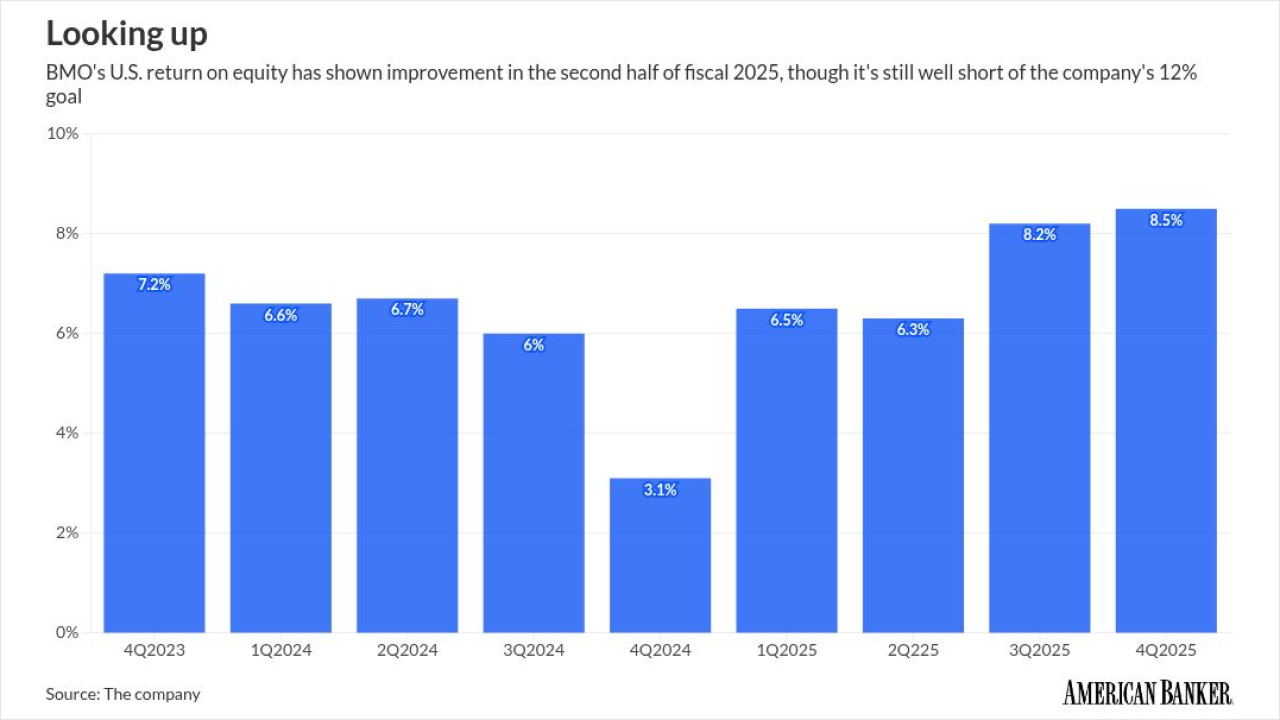-
A panel this week at the CEB TowerGroup conference in Boston debated the convenience-versus-security aspect of fighting fraud.
April 24 -
Bankers are relying on account notifications to break the ice for mobile banking and to diminish fraud. But if an alert is hard to understand, the message is lost.
July 28 -
Banks are offering the ability to manage card accounts by mobile device, providing a glide path to the digital wallet.
April 8 -
Developers are starting to add collaboration tools to mobile banking and personal financial management apps to provide better information sharing (or non-sharing, as the case may be) for couples.
February 14 -
With consumers cherry-picking mobile banking apps, the industry is facing a dramatic transformation in how it develops and popularizes products, say execs from Wells Fargo, USAA and Citi.
June 4
Automated mobile phone alerts are, in theory, an excellent way to communicate with bank customers about possible fraud, low balances and
In reality, banks' mobile alerts are in
"Alerts on paper sound great," says Mark Schwanhausser, director of omnichannel financial services at Greenwich Associates-owned Javelin Strategy & Research. "Everyone wants to have a way to communicate with customers in a personalized way without costing too much."
The importance alerts has grown with the popularity of mobile devices themselves.
"In the last few years, mobile phones have become staples of everyday life," says Alex Carriles, director of self-service channels at BBVA Compass. "We have phones next to us pretty much 24/7 and if anything happens in our life that may have some impact, especially in finances, we want to know and we want to know right away. Mobile alerts are part of that."
But problems with banks' mobile alerts include delayed timing, ambiguity, banker-speak, conflicts with email messages, and the inability for customers to take action to fix the potential problem conveyed.
"Notoriously, [banks'] alerts are substandard," Schwanhausser says. "If [the bank] alerts you to nonsense, the downside is people will start to ignore alerts and maybe not sign up for them in the future."
Flawed alerts present a reputational risk to banks that brag about their mobile channel features, he adds. That risk will rise as more people enroll in alerts.
Yet alerts remain popular. According to a
One common mistake banks make relates to timing. Late night text messages with garbled content are best avoided. "In alerts, the timing is very important," says McEvoy. "You don't want to send out alerts to most people at 3:00 a.m."
Nor would a bank want to sit on a time-sensitive message. If a person receives an alert saying he's nearing his credit limit the day after the software spotted the risk, the value is likely gone. In other words: refrain from telling customers about yesterday's news through a channel designed for immediacy. This problem occurs at banks that process batch notifications overnight.
"A best practice would be to let the person define the parameters of when he would receive an alert," says McEvoy.
Some institutions do this, including JPMorgan Chase, USAA and City Bank Texas.
Do Not Disturb
City Bank Texas lets customers decide when the Lubbock, Texas bank can text them. Otherwise, the bank's alert engine would message the customer to a transaction, to a low balance or to possible fraud any time of day or night. "We like to consider ourselves near real-time," says Jim Simpson, senior vice president and chief technology officer at the bank.
ClairMail, now owned by Monitise, powers City Bank Texas' texting capabilities.
One timing issue is outside the bank's control. Typically, City Bank Texas customers who sign up for transaction alerts will receive text messages within four to six seconds after swiping their cards. If the alerts are delayed, due to something like a carrier issue, the frustrated customer could end up calling the bank. "Users get very dependent," says Simpson. "That's the nature of the beast."
Another quirk arises when a merchant delays processing a person's payment. Maybe a person pays a dinner tab at midnight, but the restaurant waits until 2:00 a.m. to process the transaction. If the person fails to define the parameters of a bank's outreach, he may get confused by the late transaction alert and call the bank, points out Simpson.
A separate challenge the bank faces is getting the language right for some of its more detailed alerts.
"Sometimes it's hard to get the information to the end user," says Simpson. For example, the bank provides an alert that dishes on the positive things its checking account does for customers, like avoiding ATM fees and accumulating interest. "We think this is a good way to remind customers to look at what good has happened in their account," he says. The problem? The language used by the bank is a bit archaic.
The financial institution is not alone.
Crafting the right message in a character-constrained text, in which carriers require certain wording to be present, is one of the hurdles BBVA, like other banks, identifies. "It's extremely challenging," says BBVA's Carriles. "You have to become creative in the way you word the messages."
A bank needs to have its legal and compliance teams review the language.
BBVA Compass, on the heels of changing its mobile and online banking solution to an in-house solution, is readying the ability for customers to receive account alerts through SMS or email by yearend.
A different set of issues can crop up on joint accounts. At City Bank Texas, each person named on an account can set up individual transaction alert thresholds to their phones. Some spouses have asked the bank to
Despite the surprises caused by the alerts, text messages can help funnel customers into the mobile channel, an outcome most banks would hope for.
Take the way City Bank Texas allows customers to
Better Alerts
There are several ways banks could encourage mobile app engagement through alerts, says ath's McEvoy.
Alerts could connect to service trackers designed into mobile banking app interfaces. Just like online pizza trackers, banking trackers would clue a person into how much longer he has to wait for a banking transaction to finish. Perhaps an alert would be sent to the person's mobile phone when the tracker hits the next step that requires human input, he says. "This proactive and interactive process takes calls away from the call center," McEvoy says, adding it also allows "customers to forget about preordained events."
Javelin's Schwanhausser
Check customers are able to receive alerts within the mobile app, through push notifications to iOS and Android operating systems, and via email.
Check users can link in outside accounts. "The consolidated view of personal finances is a huge advantage for alerts," says Steve Schultz, COO of Check. Potentially, a consumer could link bill payment, credit cards and bank accounts and receive alerts with consistent tone and language (professional and friendly) across all of them. Alerts may relay approaching bill due dates, low balances, fees incurred, among others, and the system sends them out quick. "We want to get to you as fast as possible," Schultz says.
Looking ahead, push messages are likely to play an increasingly important role at Check. "We're bullish on push messages to mobile devices directly," Schultz says.
Over 80% of Check's users get push notifications to their mobile phones.
Banks, meanwhile, are trying to figure out the right way to catch customers' attention with their alerts. "If you have to get someone's attention, how do you blow the horn in their ears," Schwanhausser says. "There is no clear answer yet."
BBVA's Carriles, for one, believes text messages are more likely to grab a customer's attention than a changing number on an app's homepage icon. "There are so many apps that change their numbers on the icon," he says. "I don't know if they still convey that urgency anymore."
Pop-up messages could be more eye-catching, but there's a challenge in that approach, too. "There's a delicate balance between being noticed and being obnoxious," says Carriles. "You don't want to set up alerts that are grabbing users' attention so frequently that they lose effectiveness."
Bankers are advised to remember: the ways they interact with customers, even via texting, make an impression. "The key thing is alerts are conversation starters and should be viewed as incredibly important tools, so how do we broaden them?" says Schwanhausser. "People are using smartphones as their remote controls."





